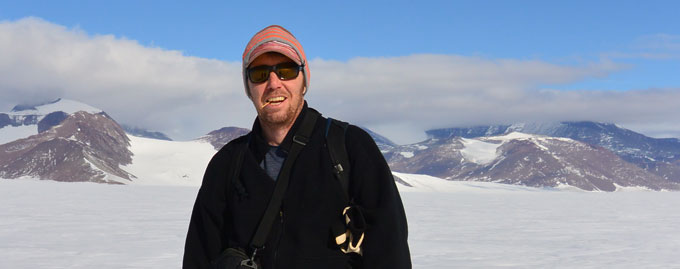This post was originally published on this site
Even in the harshest environments, microbes always seem to get by. They thrive everywhere from boiling-hot seafloor hydrothermal vents to high on Mt. Everest. Clumps of microbial cells have even been found clinging to the hull of the International Space Station (SN: 08/26/20).
There was no reason for microbial ecologist Noah Fierer to expect that the 204 soil samples he and colleagues had collected near Antarctica’s Shackleton Glacier would be any different. A spoonful of typical soil could easily contain billions of microbes, and Antarctic soils from other regions host at least a few thousand per gram. So he assumed that all of his samples would host at least some life, even though the air around Shackleton Glacier is so cold and so arid that Fierer often left his damp laundry outside to freeze-dry.
Surprisingly, some of the coldest, driest soils didn’t seem to be inhabited by microbes at all, he and colleagues report in the June Journal of Geophysical Research: Biogeosciences. To Fierer’s knowledge, this is the first time that scientists have found soils that don’t seem to support any kind of microbial life.
The findings suggest that exceedingly cold and arid conditions might place a hard limit on microbial habitability. The results also raise questions about how negative scientific results should be interpreted, especially in the search for life on other planets. “The challenge comes back to this sort of philosophical [question], how do you prove a negative?” Fierer says.

Proving a negative result is notoriously difficult. No measurement is perfectly sensitive, which means there’s always a possibility that a well-executed experiment will fail to detect something that is actually there. It took years of experiments based on multiple, independent methods before Fierer of the University of Colorado Boulder and his collaborator Nick Dragone, finally felt confident enough to announce that they’d found seemingly microbe-free soils. And the scientists intentionally stated only that they were unable to detect life in their samples, not that the soils were naturally sterile. “We can’t say the soils are sterile. Nobody can say that,” Fierer says. “That’s a never-ending quest. There’s always another method or a variant of a method that you could try.”
Polar microbiologist Jeff Bowman interprets the team’s findings as a false-negative. “Certainly, there were things there,” says Bowman of the Scripps Institution of Oceanography in La Jolla, Calif. “This is Earth. This is an environment that is massively contaminated with life.”
Even if there were a few undetected microbes in the soil, said Dragone, that wouldn’t undermine his team’s evidence that cold and aridity pose a serious challenge to life. “It’s the combination of multiple very challenging environmental conditions that restricts life more than just one acting by itself,” says Dragone. “It’s a very different sort of restriction than, say, just high temperature.”
As scientists search for evidence of life beyond Earth (SN: 7/28/20), they will inevitably be forced to walk the line between evidence of absence and absence of evidence. “What we’re trying to do on Mars is kind of the reverse of what we’ve tried to do on Earth,” says polar microbiologist Lyle Whyte of McGill University in Montreal. On Earth, claiming that an environment is lifeless is a tough scientific sell. On Mars, it will be the other way around.
